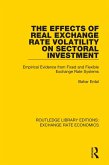Seminar paper from the year 2002 in the subject Economics - International Economic Relations, grade: 1,3 (A), University of Applied Sciences Mainz (Economics), course: European Integration, language: English, abstract: Theories on exchange rate risks and the closely related theory of Purchasing Power Parity (PPP) provide the basis for the analysis of the exchange rate problems the three car producers face while manufacturing in the UK. 1.1 Theories on exchange rate risks The exchange rate risk represents one of the most important risks for companies operating in international industries.1 There are three kinds of exchange risks: transaction risk, translation risk and economic risk. Transaction exposure is the risk of changes in the value of currency occurring between the time of the settlement of the transaction and the maturity of it.2 The second and most important type of exchange risk is economic risk. Economic exposure occurs when currencies, that are involved in the actual or potential competitive situation, become over- or undervalued.3 It can heavily affect current and future cash flows of domestic and foreign operations.4 The third type of risk is called translation exposure. It refers to the risk that exchange rate fluctuations may change the value of current assets and liabilities of the balance sheet of a foreign affiliate in case of consolidation.5 [...] 1 See: Punett, Betty J. / Ricks, David A., 1994, p. 305 2 See: Grosse, Robert / Kujawa, Duane, 1992, p. 447 3 Over- and undervaluation are expressions that will be explained under the point 1.2 "Theory of Purchasing Power Parity". 4 See: Czinkota, Michael R. / Ronkainen, Ilkka A. / Moffett Michael H., 1992, p.542 5 See: Grosse, Robert / Kujawa, Duane, 1992, p. 447
Dieser Download kann aus rechtlichen Gründen nur mit Rechnungsadresse in A, B, BG, CY, CZ, D, DK, EW, E, FIN, F, GR, HR, H, IRL, I, LT, L, LR, M, NL, PL, P, R, S, SLO, SK ausgeliefert werden.









